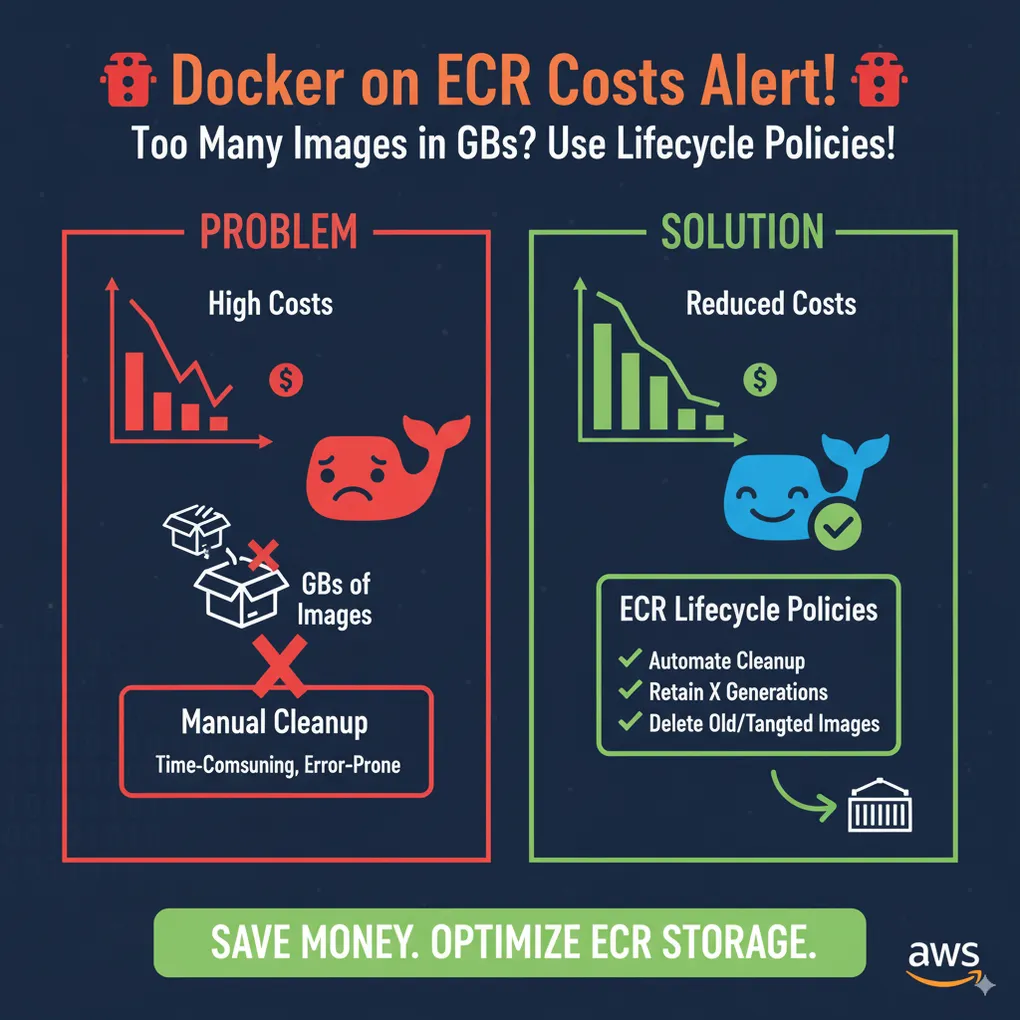
🚨 Docker on ECR Costs Alert! 🚨 Managing Hidden Storage Charges
If you’re using Docker on AWS, chances are you rely on Elastic Container Registry (ECR) to store your private images.
It’s convenient, integrated, and secure.
But here’s the catch: ECR isn’t free.
The Hidden Cost
ECR charges $0.10 per GB per month for image storage.
At first glance, this might not sound like much. But consider:
- Large images for machine learning models or LLMs can easily exceed multiple GBs per image.
- Frequent builds for dev and staging environments quickly pile up.
- Hundreds of GBs of images can silently accumulate — leading to a surprise bill.
Why Image Tagging Matters
The way you tag images directly affects how much cruft you accumulate.
Common patterns include:
- Stage-based tagging (e.g.,
dev,staging,prod)- Simple but risky — tags get overwritten, making it harder to trace specific builds.
- Commit-hash tagging (e.g.,
abc123)- The recommended approach for traceability and reproducibility.
- But it also means every commit creates a new image.
Over time, commit-based tagging without cleanup leads to hundreds of unused images sitting in your registry — and you paying for them.
The Solution: ECR Lifecycle Policies
Fortunately, AWS provides ECR Lifecycle Policies to automatically clean up unused images.
A lifecycle policy defines rules for when to expire images based on:
- Tag patterns
- Age of images
- Image count thresholds
Example: Keep the Last 10 Images Only
Here’s a simple example lifecycle policy that expires older images once there are more than 10 in the repo:
{
"rules": [
{
"rulePriority": 1,
"description": "Expire images if there are more than 10",
"selection": {
"tagStatus": "any",
"countType": "imageCountMoreThan",
"countNumber": 10
},
"action": {
"type": "expire"
}
}
]
}With this policy in place:
- Only the most recent 10 images are kept.
- Old, unused images are automatically deleted.
- Your storage costs stay predictable.
Best Practices for ECR Cost Control
- Always define lifecycle policies for dev and staging repos.
- Keep more images in production (e.g., last 30 or 60) for rollback flexibility.
- Monitor ECR usage in AWS Cost Explorer and set up budgets.
- Regularly audit image sizes — optimize Dockerfiles to reduce bloat.
Final Thoughts
ECR is an essential part of AWS container workflows, but the storage costs can sneak up on you.
By: ✅ Using commit-hash tagging for traceability ✅ Applying lifecycle policies for cleanup ✅ Monitoring storage usage
…you can ensure your registry stays clean, efficient, and cost-effective.
📖 Learn more about lifecycle policies here: AWS ECR Lifecycle Policies
💡 Have you been surprised by an ECR bill before? What cleanup strategies worked best for you?